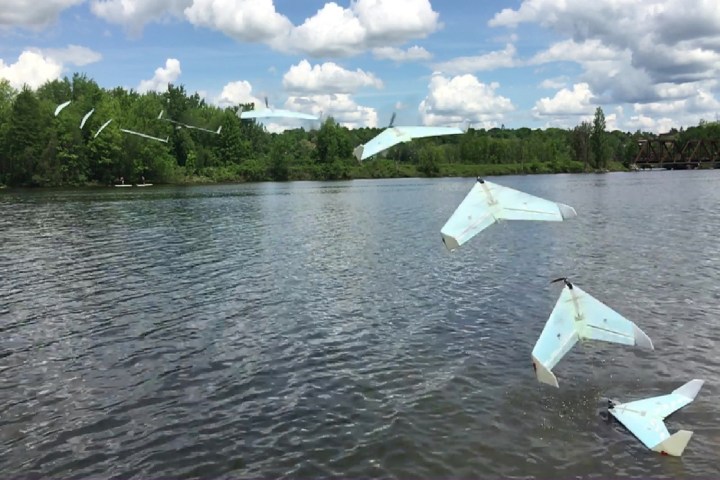That is because SUWAVE is a lake-hopping drone that is designed to fly short distances, crash down into a body of water, recharge using solar panels built into its fixed wings, and then take off again. The result is a flying machine that, at least in theory, can have a flight time that is extended indefinitely to days, weeks, or even months.
“In Canada, lakes represent convenient landing spots,” Professor Alexis Desbiens told Digital Trends. “Their location is known and they are usually free of obstacles — [meaning there’s] no need for heavy or complex landing sensors that are difficult to integrate on small UAVs. A drone that could take advantage of lakes as a standby and recharge station could travel long distances or monitor a site of interest for an extended period of time. We calculated that such drone, limited to short continuous flights could travel across Canada by hopping from lake to lake.”

The drone’s novel takeoff and landing strategies were inspired by the Mallard duck and the gannet seabird. Although the idea of landing by crashing sounds like the recipe for a short-lived drone, a clever design means that the 584-gram flying machine is only ever subjected to around 15 Gs of deceleration, which it is perfectly capable of handling. It is also waterproof, something that is helpful for a drone likely to spend large parts of its life sitting in lakes.
When it comes to specific uses for the UAV, Desbiens has a few ideas. “A swarm of SUWAVE drones could relay each other to continuously monitor a forest fire,” he said. “This drone could also be used in environmental research to fetch water sample from faraway lakes.”
Currently, the team has developed the concept and performed a few flights with it. “We are now integrating solar panels and are intending to demonstrate lake-to-lake travel and multi-day missions during the summer,” Desbiens said. “Various scenarios will be tested to evaluate its potential for commercialization.”
Editors' Recommendations
- Leaker estimates Intel Alder Lake i9-12900K can outperform AMD Ryzen 9 5950X
- California startup’s drone software tracks social distancing from the air
- Pandemic drones that can detect fevers and coughing will soon take to the sky
- GoPro’s defunct Karma drone has suddenly stopped working, owners claim
- No more panels? A.I. helps create sprayable solar cells that can be painted on


